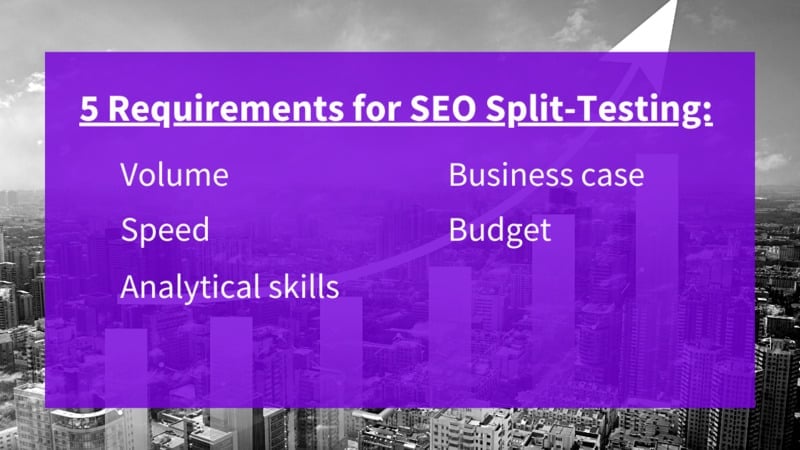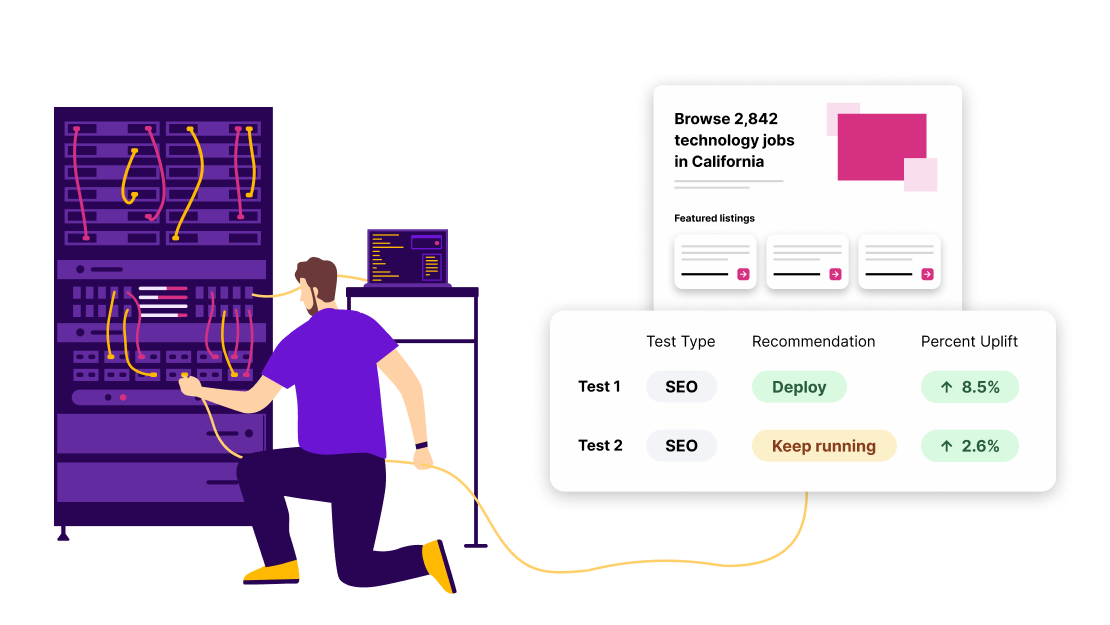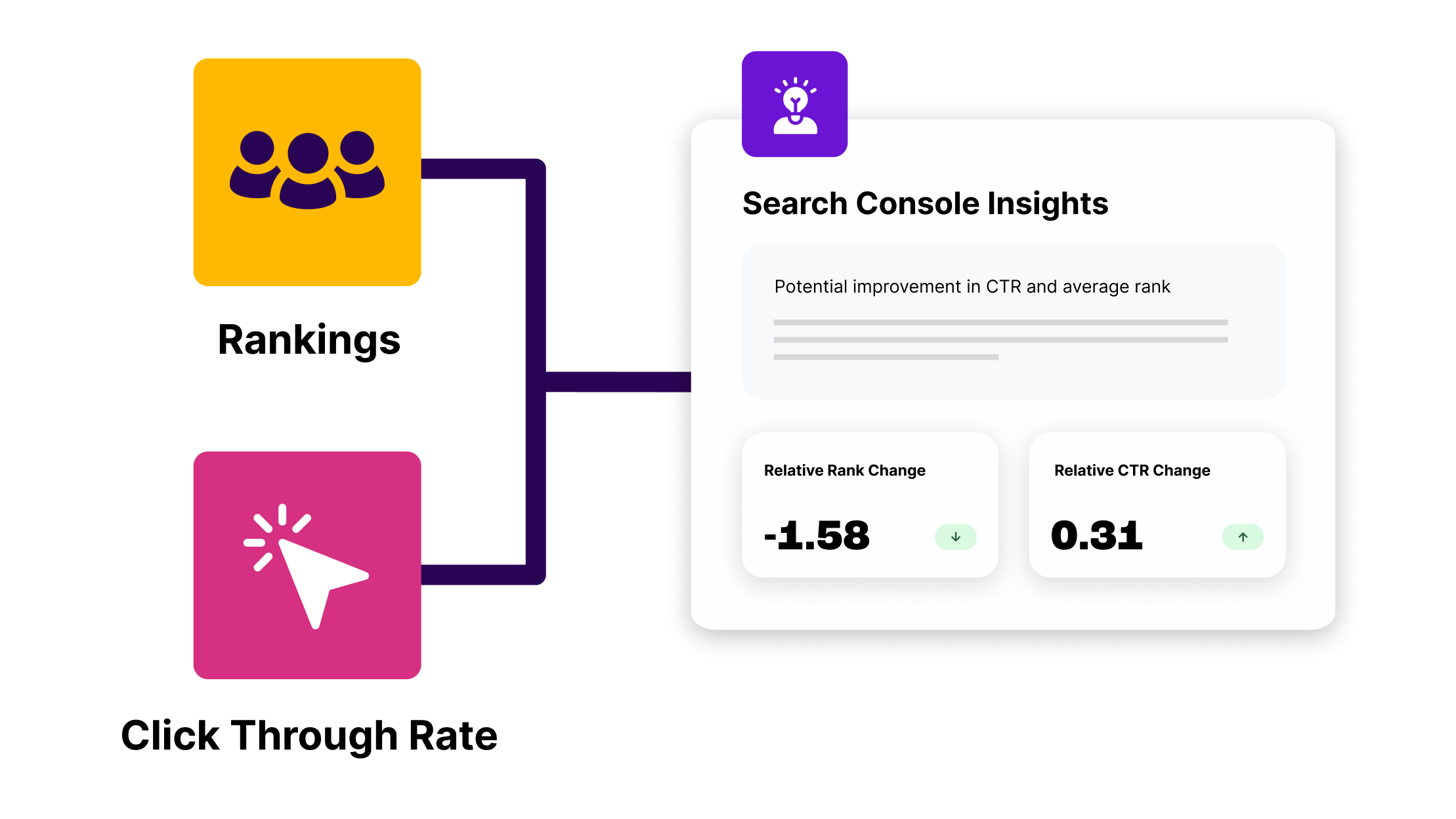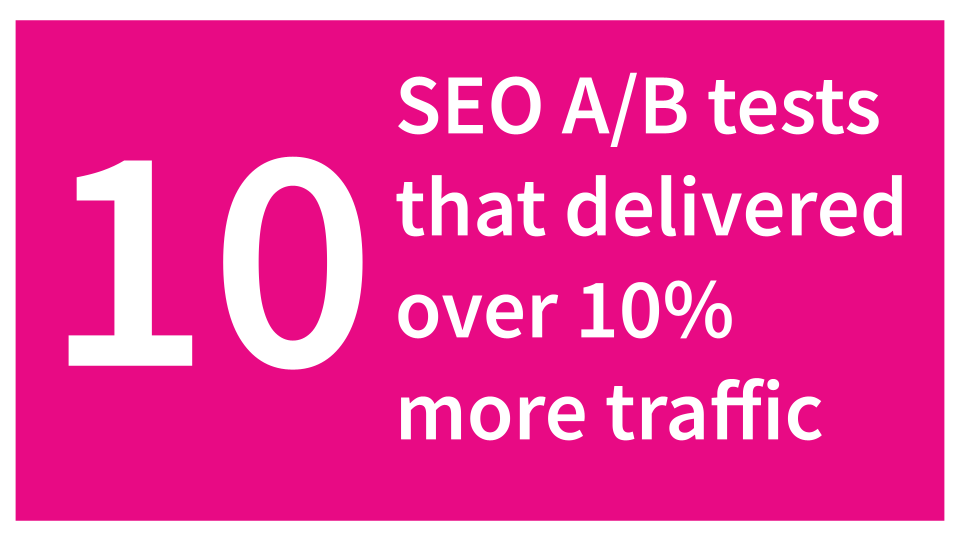The rise of SEO testing capabilities is creating a seismic shift in the SEO industry.
Large websites benefit the most from SEO testing but not all large websites are aware they should be testing. And of the ones who are testing, many of them are undertaking a manual version of it. SEO split-tests that lack a strong foundation ultimately cost an organization time, resources, and growth.
In this post, we’re going to share when to launch SEO tests on your website, along with the minimum requirements to keep in mind before running your first SEO split-test, for optimal results.
When does it make sense to start running SEO tests?
As a general rule of thumb, it makes sense to start running SEO tests once your site is generating a significant amount of traffic and you have at least one site section comprising large numbers of pages. Site sections are groups of pages with the same layout and template, making it easy to plug-and-play multiple variables.
Arguably more important, your site sections must also receive enough traffic to run statistically significant tests (more on this below). There must be a wide enough audience to quantify a noticeable shift in performance across the site sections undergoing testing.
Lastly, it only makes sense to begin SEO testing once you have the resources and capacity to undertake such a large project.
5 minimum requirements before running your first SEO split-test
Failure to prepare for your first SEO split-test can result in quite a few pitfalls, such as an inability to interpret results due to externalities like seasonality. Here’s our 5 minimum requirements to meet before getting started:
1. The site sections you want to test get at least 1k organic site visits per day
The best case for SEO split-tests is robust site sections and groups of pages with the same layout and template that you can split into statistically similar groups of control and variant pages.
However, these sections must receive adequate traffic for results that are statistically significant. Our rule of thumb is that the scalable site section on which you wish to conduct SEO split-testing should receive 1,000 organic site visits per day. It may be possible to run tests on smaller site sections under some circumstances especially if the traffic is particularly smooth and predictable, but in general, the power of tests is too low on smaller sections.
Note that this does not include general traffic to your homepage. Rather, you want to measure daily traffic to the specific site sections on which you wish to conduct SEO split-testing. The more consistent and predictable the traffic, the more powerful tests you’ll be able to run, and the smaller uplifts you’ll be able to detect with confidence.
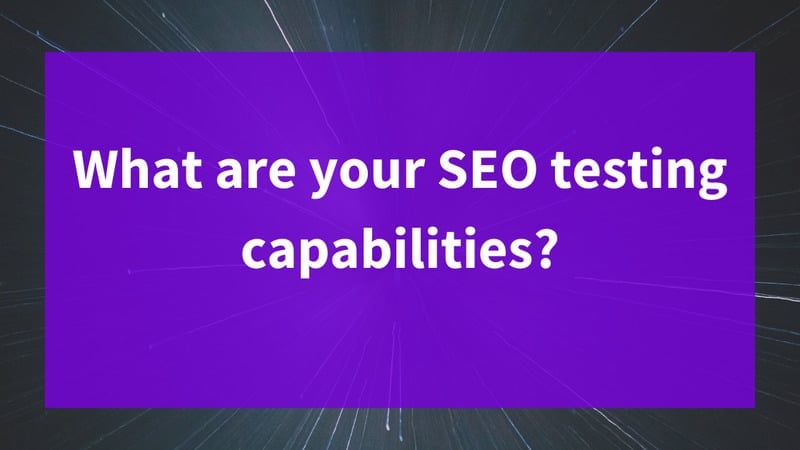
2. Your team has the ability to deploy changes quickly
Though SEO might be a long game, SEO split-tests, in particular, require a bit more urgency to deploy relevant changes. Before running your first SEO split-test, you must have the ability to make timely changes to subsets of pages on your website.
For instance, rather than change all product pages, you must have the ability to change a percentage of pages while leaving the rest unchanged.
When DIY SEO testing in-house, it can be difficult to manually deploy changes in a time-effective manner. That’s where SearchPilot’s meta CMS feature can be helpful, as it allows you to specify unique changes to site section layout, and apply that change just to a percentage of pages in that section.
3. Your team has strong analytical capabilities, such as pulling segmented data and following traffic all the way to conversions and revenue
The first technical capability you’ll need is the ability to measure the impact of the site change. You’ll need resources to pull segmented data out of analytics that align with the specific grouping of control and variant pages and perform sophisticated analysis of the statistical properties of the two sets of traffic.
The second is more granular: SEO split-testing is most effective when tests are connected all the way through to conversions and revenue. And for that, you’re going to need the ability to set cookies to give users consistent site-wide experiences and modify the server control of variants depending on the cookie the user has set.

4. You’ve thought about SEO split-testing from a business case reasoning perspective
SEO split-tests can be a considerable undertaking. Even with the above prerequisites for testing, the decision to split-test comes down to thinking in business case terms.
Is the effort worth it?
Is there a justifiable rationale for the benefit and costs?
Does the likely combination of the number of positive tests you might be able to run in any given time period, combined with the potential uplift from the number of winning tests you might receive in that time and the value of organic traffic to the business make split-tests worthwhile?
For large websites with millions of unique visitors, that question is generally a no-brainer. And with tons of organic traffic and high visibility, there can also be a risk avoidance factor. SEO split-testing is worthwhile for large websites simply to ensure you never damage the performance you’ve built by testing changes before you deploy to confirm they’re not negative.
Finally, the business case can include the engineering and product time saved from only needing those teams to work on tested and proven SEO activities rather than the full backlog of SEO ideas.
5. You have the budget
It goes without saying that you will require some baseline level of SEO capability, SEO maturity, and a dedicated SEO team — whether that’s in-house, agency, or provider-specific — to conduct SEO split-testing. As such, budget must be a major consideration before starting.
SEO split-tests require punctual updates with robust access to segmented data that align with the control and variant pages. Not only will it require people to implement such changes, but you’ll also need an analyst with an understanding of common externalities to identify and properly measure the impact of each change.
How SearchPilot can help run scientific SEO split-tests
Fortunately, there are now helpful tools, like SearchPilot, that help teams boost their SEO testing abilities. If you are looking to speed up your learning and avoid some common pitfalls, our team at SearchPilot can help. Request a demo here.
